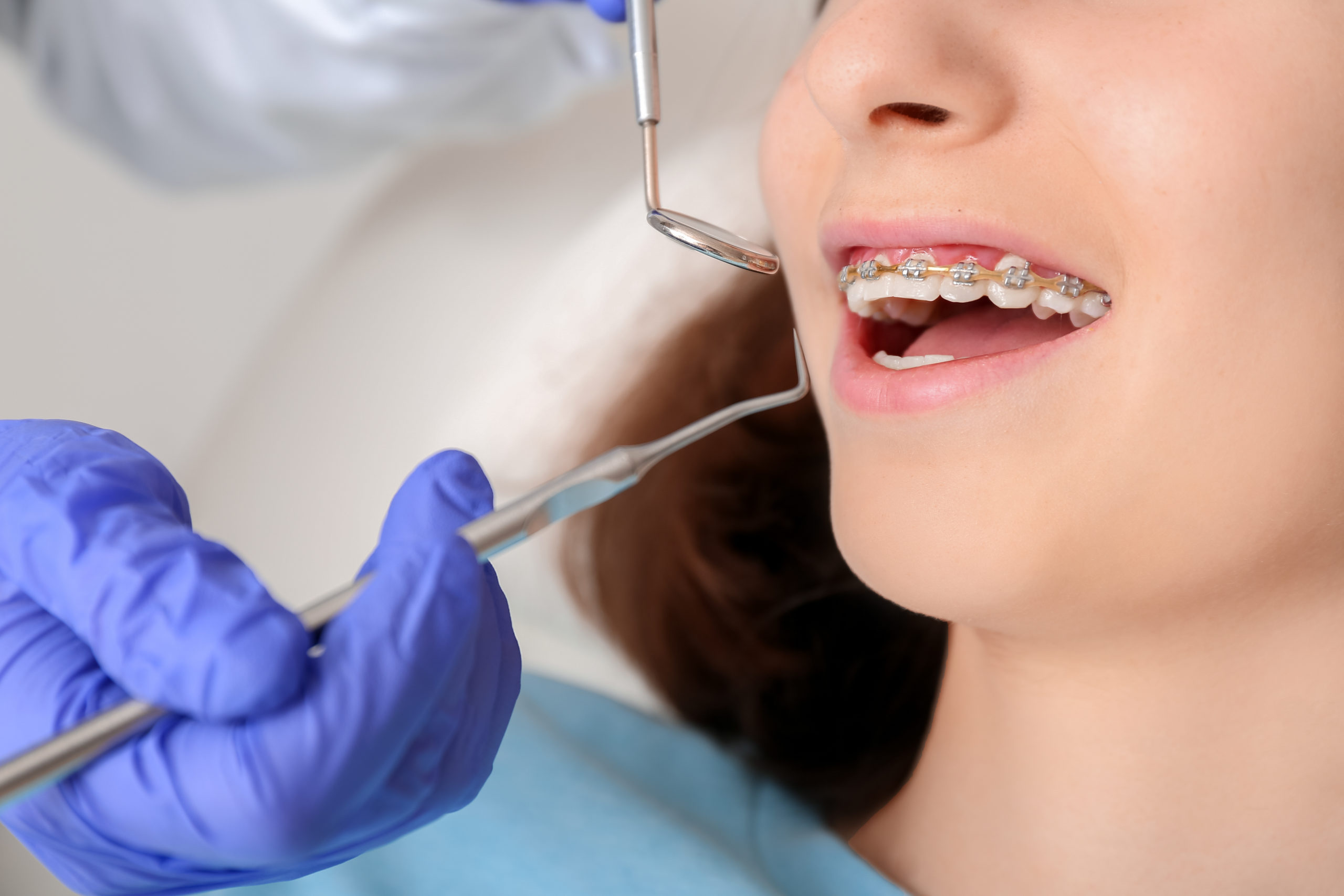Specialist Cumming Braces and Aligners: What to Know Before You Visit
Specialist Cumming Braces and Aligners: What to Know Before You Visit
Blog Article
Comprehensive Overview to Orthodontics Treatments for Dealing With Dental Misalignments
In the realm of orthodontics, the trip to achieving a completely lined up smile entails a myriad of procedures customized to remedy oral imbalances. From standard braces to unseen aligners and also medical choices, the field of orthodontics supplies a variety of remedies to address varying degrees of oral irregularities. Comprehending the intricacies of each procedure, including their mechanisms, benefits, and possible disadvantages, is crucial in making informed decisions regarding one's orthodontic therapy. As we browse via the extensive guide to orthodontic procedures for correcting dental imbalances, the detailed information of each technique will certainly unravel, clarifying the course toward a functional and unified oral positioning.
Orthodontic Procedures Overview

In enhancement to conventional dental braces and clear aligners, orthodontists may also recommend various other interventions like headgear, palatal expanders, or retainers to deal with certain placement problems (braces). These treatments are customized to every client's special demands and might entail a mix of therapies to achieve the preferred outcomes. Normal changes and monitoring are critical parts of orthodontic treatment to ensure progression is on track and to make any type of required alterations in the process. By undergoing orthodontic treatments, patients can not just attain a straighter smile yet likewise boost their total dental wellness and feature.
Conventional Braces: Just How They Function
When thinking about orthodontic therapies for oral imbalances, standard dental braces attract attention as a reliable method for dealing with teeth positioning. Standard dental braces include brackets, cords, and bands that interact to use constant pressure on the teeth, progressively relocating them into the wanted positioning. The braces are affixed to the teeth making use of an unique adhesive, and the cords are threaded through the brackets. By readjusting the stress of the cables, orthodontists can regulate the instructions and pressure put on each tooth, assisting them right into proper placement in time.
One secret element of just how typical dental braces job is the process of bone makeover. As stress is applied to the teeth via the dental braces, the bone bordering the teeth is reshaped to sustain the brand-new tooth placements. This makeover is necessary for the long-lasting stability of the dealt with positioning. People will certainly require normal adjustments at the orthodontist's office to make sure the dental braces remain to use the right pressure for effective teeth movement.
Invisible Aligners: Cons and pros
Unnoticeable aligners offer a discreet and hassle-free alternative to typical dental braces for correcting oral imbalances. These clear, tailor-made trays are essentially unnoticeable when put on, making them an attractive option for individuals seeking an extra cosmetically pleasing orthodontic therapy. Among the primary benefits of unseen aligners is their removability, enabling less complicated maintenance of dental health contrasted to traditional dental braces. People can get rid of the aligners prior to eating or brushing their teeth, decreasing the risk of food obtaining embeded the appliance and streamlining the cleaning process.

Surgical Orthodontic Options
Surgical interventions in orthodontics existing practical alternatives for resolving complicated oral imbalances that may not be properly settled with traditional orthodontic treatments. While conventional braces and undetectable aligners can remedy numerous orthodontic issues, specific situations need surgical intervention to achieve optimum results. Surgical orthodontic options are typically advised for serious malocclusions, substantial jaw discrepancies, and situations where the underlying bone structure requires useful reference modification to achieve proper placement.
One typical medical orthodontic procedure is orthognathic surgical procedure, which involves rearranging the jaws to correct functional problems such as problem talking or eating. This surgical procedure is frequently done in cooperation with an orthodontist that aids straighten the teeth before and after the procedure. Surgical orthodontics may additionally include procedures to expose influenced teeth, remove excess periodontal tissue, or improve the jawbone to create a much more harmonious facial profile.
Prior to considering surgical orthodontic options, people undergo a detailed examination to establish the necessity and potential benefits of such treatments. cumming orthodontics. While surgical treatment may seem challenging, it can considerably improve both the feature and visual appeals of the smile in cases where standard orthodontic treatments fall short
Retainers and Post-Treatment Treatment

Post-treatment care entails following the orthodontist's guidelines vigilantly. This might consist of correct official source oral hygiene methods, participating in follow-up visits, and putting on the retainers as recommended. Failing to adhere to post-treatment treatment directions can result in regression, where the teeth gradually relocate back in the direction of their original settings. Regular retainer wear, great oral hygiene, and normal dental examinations are vital for preserving the outcomes attained via orthodontic surgery and making certain the long-term security of the corrected oral alignment.
Conclusion
In verdict, orthodontic procedures provide various choices for remedying oral misalignments. Surgical orthodontic alternatives are offered for a lot more extreme imbalances. In general, orthodontic treatments can effectively boost oral health and visual look.
As we navigate via the thorough overview to orthodontic procedures for correcting oral imbalances, the complex details of each approach will certainly helpful resources unravel, dropping light on the path toward a functional and unified oral positioning. - invisalign
One of the most common orthodontic therapies is the usage of dental braces, which consist of steel braces and cables that use mild stress to gradually change teeth right into the preferred placement.When thinking about orthodontic treatments for dental imbalances, standard dental braces stand out as a reliable method for remedying teeth placing. Additionally, undetectable aligners may not be ideal for complicated orthodontic concerns that call for even more substantial teeth movement, as they are commonly advised for moderate to modest situations. Retainers are customized orthodontic devices created to hold teeth in their remedied positions after the completion of orthodontic therapy.
Report this page